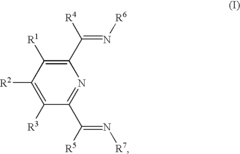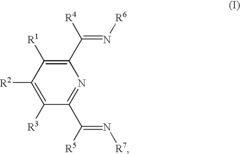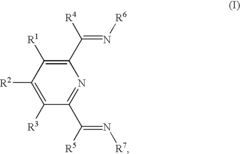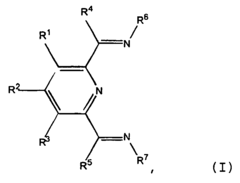HDPE's Influence on Next-Gen Wearable Technology
HDPE in Wearables: Background and Objectives
High-density polyethylene (HDPE) has emerged as a promising material in the realm of next-generation wearable technology, marking a significant shift in the landscape of personal devices. The evolution of wearable technology has been rapid, transitioning from bulky, limited-function devices to sleek, multifunctional gadgets seamlessly integrated into our daily lives. HDPE, known for its versatility and durability, is poised to play a crucial role in this ongoing transformation.
The journey of wearable technology began with simple step counters and has now expanded to include sophisticated health monitors, augmented reality glasses, and smart clothing. Each iteration has brought new challenges and opportunities, with materials science at the forefront of innovation. HDPE's entrance into this field represents a convergence of material advancements and the ever-growing demands of the wearable tech market.
As we look towards the future of wearable technology, several key objectives emerge. Firstly, there is a pressing need for materials that can withstand the rigors of daily wear while maintaining optimal performance. HDPE's high strength-to-density ratio and excellent chemical resistance make it a prime candidate for addressing this challenge. Secondly, the industry is seeking ways to improve the comfort and user experience of wearable devices, an area where HDPE's lightweight nature and flexibility could prove invaluable.
Another critical objective in the development of next-generation wearables is enhancing sustainability. As consumers become increasingly environmentally conscious, the demand for eco-friendly materials in technology products is rising. HDPE's recyclability and potential for bio-based production align well with this goal, potentially offering a more sustainable alternative to traditional materials used in wearable devices.
The integration of HDPE into wearable technology also aims to overcome current limitations in device functionality. Its unique properties could enable the creation of more durable, water-resistant, and potentially self-healing components, expanding the range of environments and applications for wearable devices. Additionally, HDPE's compatibility with various manufacturing processes, including 3D printing, opens up new possibilities for customization and rapid prototyping in wearable tech development.
As we delve deeper into the potential of HDPE in wearable technology, it's crucial to consider the broader implications for the industry. This material could potentially disrupt existing supply chains, manufacturing processes, and design paradigms. The successful integration of HDPE into next-generation wearables may require interdisciplinary collaboration between materials scientists, electronic engineers, and industrial designers to fully harness its capabilities.
Market Analysis for HDPE-Enhanced Wearables
The market for HDPE-enhanced wearable technology is experiencing significant growth, driven by the increasing demand for durable, lightweight, and comfortable wearable devices. High-density polyethylene (HDPE) has emerged as a game-changing material in this sector, offering unique properties that address many of the challenges faced by traditional wearable technologies.
Consumer interest in wearable devices has been steadily rising, with fitness trackers, smartwatches, and health monitoring devices leading the charge. The global wearable technology market is projected to reach substantial valuations in the coming years, with HDPE-enhanced products poised to capture a significant share of this expanding market.
One of the key drivers for HDPE-enhanced wearables is the growing health and fitness consciousness among consumers. As people become more health-aware, the demand for devices that can track vital signs, monitor physical activity, and provide real-time health insights has surged. HDPE's properties allow for the creation of more comfortable, sweat-resistant, and durable wearables that can withstand the rigors of daily use and intense physical activities.
The sports and athletics sector represents a particularly promising market for HDPE-enhanced wearables. Professional athletes and fitness enthusiasts are constantly seeking equipment that can improve their performance while providing comfort and durability. HDPE's lightweight nature and ability to withstand extreme conditions make it an ideal material for sports-oriented wearable devices.
In the healthcare industry, HDPE-enhanced wearables are gaining traction for remote patient monitoring and chronic disease management. The material's biocompatibility and resistance to various chemicals make it suitable for long-term wear, opening up new possibilities for continuous health monitoring and telemedicine applications.
The consumer electronics market is another area where HDPE-enhanced wearables are making significant inroads. As consumers demand more from their personal devices, manufacturers are turning to HDPE to create smartwatches, augmented reality glasses, and other wearable gadgets that are more resilient and comfortable for extended use.
Environmental concerns and sustainability trends are also influencing the market for HDPE-enhanced wearables. The recyclability of HDPE aligns with the growing consumer preference for eco-friendly products, potentially giving HDPE-based wearables an edge in the market over devices made from less sustainable materials.
However, the market also faces challenges. The higher cost of HDPE compared to some traditional materials used in wearables may impact pricing strategies and consumer adoption rates. Additionally, competition from other advanced materials and the need for education about HDPE's benefits in wearable technology could affect market growth rates.
HDPE Integration Challenges in Wearable Tech
The integration of High-Density Polyethylene (HDPE) into next-generation wearable technology presents several significant challenges that researchers and manufacturers must address. One of the primary obstacles is achieving optimal flexibility and comfort while maintaining the structural integrity of HDPE components. Wearable devices demand materials that can conform to the human body's contours and movements, yet HDPE's inherent rigidity can impede this requirement.
Another critical challenge lies in the thermal management of HDPE-integrated wearables. HDPE's low thermal conductivity can lead to heat retention, potentially causing discomfort for users and affecting the performance of heat-sensitive electronic components. Developing effective heat dissipation mechanisms without compromising the material's beneficial properties is crucial for successful integration.
Durability and longevity pose additional hurdles in HDPE integration. While HDPE offers excellent chemical resistance and moisture barrier properties, its susceptibility to UV degradation and potential for stress cracking under certain conditions must be mitigated to ensure the longevity of wearable devices exposed to various environmental factors.
The manufacturing process itself presents challenges, particularly in achieving seamless integration between HDPE components and other materials commonly used in wearable technology, such as textiles, elastomers, and electronic substrates. Developing reliable bonding techniques and ensuring compatibility with existing manufacturing processes is essential for scalable production.
Environmental concerns also play a significant role in HDPE integration challenges. As sustainability becomes increasingly important in consumer electronics, finding ways to incorporate recycled HDPE or develop easily recyclable HDPE-based wearables without compromising performance is a key consideration for manufacturers.
Miniaturization is another critical challenge in HDPE integration for wearable technology. As devices become smaller and more sophisticated, maintaining the desired properties of HDPE while reducing component size and thickness requires innovative material engineering and manufacturing techniques.
Lastly, ensuring the biocompatibility of HDPE in wearable applications is crucial, especially for devices in direct contact with the skin for extended periods. While HDPE is generally considered safe, long-term studies on its interaction with human skin in various environmental conditions are necessary to address potential concerns and meet regulatory requirements for wearable technology.
Current HDPE Implementation Strategies
01 Composition and properties of HDPE
High-Density Polyethylene (HDPE) is a thermoplastic polymer with a high strength-to-density ratio. It is characterized by its long linear chains with minimal branching, resulting in higher tensile strength, stiffness, and chemical resistance compared to other polyethylene types. HDPE's properties make it suitable for various applications in packaging, construction, and automotive industries.- Composition and manufacturing of HDPE: High-Density Polyethylene (HDPE) is a thermoplastic polymer produced from ethylene monomers. Various methods and compositions are used to manufacture HDPE with specific properties, including the use of catalysts, additives, and different polymerization techniques. These processes aim to enhance the material's strength, durability, and chemical resistance.
- HDPE blends and composites: HDPE is often blended with other materials or used in composites to improve its properties or create materials with specific characteristics. These blends and composites can include other polymers, fibers, or inorganic materials, resulting in products with enhanced mechanical properties, thermal stability, or specific functionalities.
- HDPE applications in packaging and containers: HDPE is widely used in packaging and container applications due to its excellent chemical resistance, durability, and moisture barrier properties. Innovations in this area focus on improving the material's performance in specific packaging applications, such as food containers, bottles, and industrial packaging solutions.
- Recycling and sustainability of HDPE: As environmental concerns grow, there is increasing focus on recycling and improving the sustainability of HDPE products. This includes developing more efficient recycling processes, creating products from recycled HDPE, and designing HDPE materials that are more easily recyclable or biodegradable.
- HDPE in construction and industrial applications: HDPE finds extensive use in construction and various industrial applications due to its strength, chemical resistance, and durability. Innovations in this area include the development of HDPE pipes, geomembranes, and other specialized products for use in infrastructure, agriculture, and industrial settings.
02 HDPE blends and composites
HDPE can be blended with other materials or reinforced with fillers to enhance its properties. These blends and composites can improve mechanical strength, thermal stability, or specific functional characteristics. Common additives include other polymers, natural fibers, or inorganic particles, resulting in materials with tailored properties for specific applications.Expand Specific Solutions03 HDPE processing techniques
Various processing techniques are used to manufacture HDPE products, including injection molding, extrusion, blow molding, and rotational molding. Each method offers specific advantages for different product types and applications. Advanced processing techniques can improve the material's performance or enable the production of complex shapes and structures.Expand Specific Solutions04 Recycling and sustainability of HDPE
HDPE is recyclable and can be reprocessed multiple times without significant loss of properties. Recycling processes for HDPE include mechanical recycling, chemical recycling, and energy recovery. Efforts are being made to improve recycling efficiency and develop more sustainable HDPE products, including the use of bio-based sources for HDPE production.Expand Specific Solutions05 HDPE applications in various industries
HDPE finds applications in numerous industries due to its versatile properties. It is widely used in packaging for bottles, containers, and films. In construction, HDPE is used for pipes, geomembranes, and insulation. Other applications include automotive parts, toys, and household items. Ongoing research focuses on expanding HDPE's use in specialized applications such as medical devices and 3D printing.Expand Specific Solutions
Key Players in HDPE Wearable Innovation
The HDPE market for next-generation wearable technology is in its growth phase, with increasing demand driven by the material's durability and flexibility. The market size is expanding rapidly, fueled by innovations in smart textiles and medical wearables. Technologically, HDPE applications in wearables are advancing, with companies like Dow Global Technologies LLC, Borealis AG, and DuPont de Nemours, Inc. leading research and development efforts. These firms are focusing on enhancing HDPE's properties for improved comfort and functionality in wearable devices. Emerging players such as DSM IP Assets BV and ExxonMobil Chemical Patents, Inc. are also contributing to the field's technological maturity, exploring novel HDPE formulations tailored for wearable applications.
Dow Global Technologies LLC
Borealis AG
Breakthrough HDPE Technologies for Wearables
- HDPE is produced using polymerization catalysts comprising iron or cobalt complexes of specific compounds, such as those with aryl and substituted aryl groups, which significantly reduce water vapor and oxygen transmission rates, making them suitable for improved packaging.
- The use of an iron or cobalt complex catalyst system for polymerizing ethylene, where the catalyst component includes specific compounds with hydrocarbyl, inert functional groups, and aryl substitutions, resulting in HDPE with lower water vapor and oxygen transmission rates, suitable for improved packaging applications.
Environmental Impact of HDPE in Wearables
The environmental impact of HDPE (High-Density Polyethylene) in wearable technology is a critical consideration as the industry moves towards more sustainable practices. HDPE, while offering excellent durability and chemical resistance, poses significant environmental challenges throughout its lifecycle.
In the production phase, HDPE manufacturing relies heavily on fossil fuels, contributing to greenhouse gas emissions and resource depletion. The process involves energy-intensive polymerization and extrusion, which can lead to air and water pollution if not properly managed. However, advancements in green chemistry and renewable energy integration in manufacturing processes are gradually reducing this impact.
During the use phase, HDPE's durability in wearables contributes to extended product lifespans, potentially reducing overall waste generation. Its resistance to moisture and chemicals also means less frequent replacement of components, further minimizing environmental impact. Nevertheless, the close contact of HDPE with skin raises concerns about potential microplastic shedding, which could enter ecosystems through washing or disposal.
End-of-life management presents both challenges and opportunities. HDPE is recyclable, but the complex nature of wearable devices often makes separation and recycling difficult. Many wearables end up in landfills or incinerators, where HDPE's slow degradation rate contributes to long-term environmental issues. However, innovative recycling technologies and design-for-disassembly approaches are emerging to address these challenges.
The use of HDPE in wearables also intersects with broader environmental trends. As consumers become more environmentally conscious, there's growing demand for eco-friendly materials in wearable technology. This has spurred research into bio-based alternatives to HDPE and the development of closed-loop recycling systems for wearable devices.
Regulatory frameworks are evolving to address the environmental impact of materials like HDPE in consumer electronics. Extended Producer Responsibility (EPR) schemes and stricter regulations on electronic waste are pushing manufacturers to consider the entire lifecycle of their products, including the environmental footprint of materials like HDPE.
Looking ahead, the wearable technology industry faces the challenge of balancing HDPE's beneficial properties with its environmental impact. Strategies such as incorporating recycled HDPE, developing more easily recyclable composites, and exploring bio-based alternatives are gaining traction. These efforts aim to create a more sustainable future for wearable technology while maintaining the performance benefits that HDPE provides.
Durability and Longevity Improvements with HDPE
High-density polyethylene (HDPE) is poised to revolutionize the durability and longevity of next-generation wearable technology. As consumer demand for more robust and long-lasting wearable devices continues to grow, HDPE offers a promising solution to address these needs.
HDPE's exceptional strength-to-density ratio makes it an ideal material for wearable device casings and structural components. Its high impact resistance and ability to withstand repeated stress without deformation contribute significantly to the overall durability of wearable devices. This enhanced durability translates to longer product lifespans, reducing the frequency of replacements and repairs.
The material's chemical resistance properties further bolster its suitability for wearable technology applications. HDPE's resistance to a wide range of chemicals, including sweat, oils, and common household cleaning agents, ensures that devices maintain their integrity even under prolonged exposure to these substances. This characteristic is particularly valuable for fitness trackers and smartwatches that are frequently exposed to perspiration and various environmental factors.
HDPE's low moisture absorption rate is another critical factor in improving the longevity of wearable devices. By minimizing water ingress, HDPE helps protect sensitive electronic components from moisture-related damage, a common cause of device failure in wearable technology. This property is especially beneficial for devices designed for use in high-humidity environments or water-resistant applications.
The material's excellent thermal stability contributes to the overall reliability of wearable devices. HDPE maintains its structural integrity across a wide temperature range, ensuring consistent performance in various environmental conditions. This stability is crucial for wearables that may be exposed to extreme temperatures during outdoor activities or in industrial settings.
Furthermore, HDPE's UV resistance properties offer additional protection against degradation caused by prolonged exposure to sunlight. This characteristic is particularly important for wearable devices that are frequently used outdoors, such as fitness trackers and smartwatches, as it helps prevent discoloration and material breakdown over time.
The incorporation of HDPE in wearable technology also presents opportunities for improved design flexibility. Its malleability allows for the creation of complex shapes and ergonomic designs without compromising structural integrity. This flexibility enables manufacturers to develop more comfortable and user-friendly wearable devices that can withstand the rigors of daily use.
As the wearable technology market continues to evolve, the integration of HDPE is expected to play a crucial role in addressing consumer demands for more durable and long-lasting devices. The material's unique combination of strength, chemical resistance, and environmental stability positions it as a key enabler in the development of next-generation wearable technology that can withstand the challenges of everyday use while maintaining performance and aesthetics over extended periods.







